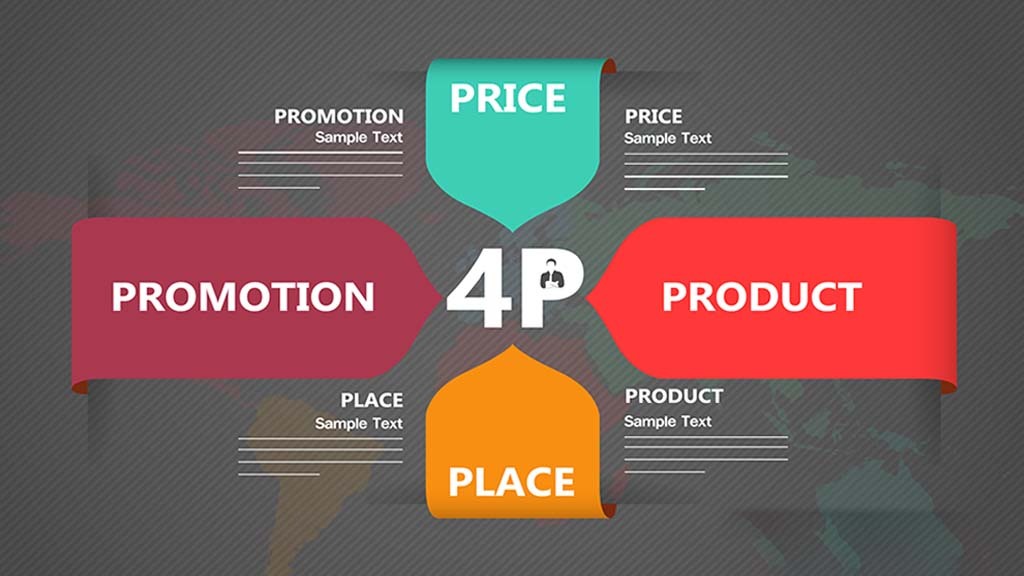In this article, we explain about what are the 4 ps of marketing. If you’re starting your own business, you need to think about implementing an effective business strategy to acquire new customers repeatedly and sustainably.
Thinking about the marketing mix and 4P policies provides a framework to ensure that this analysis is done as comprehensively as possible.
The purpose of this article is to introduce you to the 4Ps and to give you ways to apply these concepts within your company.
The 4Ps of Marketing
The framework of the 4Ps allows the entrepreneur both to have a global reflection and to neglect no point of his commercial strategy.
Approached for the first time by Neil H. Borden, it was Philipe Kotler, considered the leader of the school of marketing management, who took up this notion and popularized it.
The 4Ps are a mnemonic device for reviewing the various business levers available to the company.
Once mixed with the right dosage, the 4Ps must allow the company to find the ideal recipe to market its products and services.
Here the 4P formula also called mix marketing
- The product policy (product),
- The price policy (price),
- The distribution policy (place) and, finally
- The communication policy (promotion).
Let’s now take a closer look at each of these policies.
The different Marketing mix Policies
The Product Policy (Product)
The product policy is the starting point of your business strategy. It should look at every one of the qualities of every item to permit you to propose an appealing proposal for your clients.
This is, therefore, the most important of the policies since it defines the specifics of the products you are going to sell.
The term product designates here both consumer goods and services and tangible or intangible products (e-books, for example).
In your advertising plan, the item strategy should characterize exhaustively every one of the attributes of the product:
- the level of quality,
- content or functionality,
- the design (colors, format, etc.),
- related services (e.g., warranty or after-sales service),
- the conditioning,
- etc.
To establish this list, you will need to rely on your market research and the information you have collected from your prospects.
The implementation of the product policy is also an opportunity to consider the customer relationship in the long term: what happens once a customer has purchased your product? Can you then sell him accessories, refills, or complementary products or services?
Pricing Policy (price)
The pricing (sales) policy must be implemented, taking into account a set of internal and external constraints.
Internal constraints:
- current market share and target market share,
- cost price and profitability target,
- positioning (luxury, premium, cheap, etc.).
External constraints:
- concurrence,
- transport and distribution costs,
- the purchasing power of target consumers.
The pricing policy must also take into account volumes (differences between retail and wholesale prices, possible discounts or discounts) and sales conditions.
The Distribution Policy (Place)
Here you must consider all the distribution channels on which your commercial strategy will be based:
- Will the sales be intended for individuals and professionals?
- Will it be retail, semi-wholesale, or wholesale?
- Will sales be possible by the internet (e-commerce, affiliation) or simply by traditional channels?
- Will you have a sales force?
- Will you have franchisees?
You should also ask yourself about the logistical constraints linked to each channel:
- How will inventory be managed?
- How will the products be transported?
- How do you plan to present your products? Will they be displayed on displays?
Finally, you will need to consider the human resources needed to implement the strategy:
- Will the sellers be attached to your business?
- Will you be using commercials or multi-card VRPs?
- Who will take care of the transport, the packaging, and the shelving?
Yet again, as may be obvious, the conveyance strategy has numerous features, and its appearance must be done reliably so as not to miss significant components.
Communication Policy (Promotion)
The communication policy is undoubtedly the policy that business creators think about the most when they want to market a product or service.
Communication is again a fairly vast area for which it will be necessary to take into account all the possibilities offered to establish your commercial strategy:
- publicity
- sales promotion
- marketing direct (flyers, emailing, télémarketing, etc.)
- public relations
- blog
- social networks
- etc.
Some will not suit you, and you will quickly abandon them, perhaps because of their cost or their difficulties in setting up. Others, on the contrary, will prove to be paying choices allowing you to sell a large number of products.
Marketing Plan
The marketing plan is the culmination of your reflection on the marketing mix and the 4Ps. It will summarize your business strategy and present all the actions to be implemented, taking into account each of the ingredients of the 4Ps.
The marketing plan is established over a fixed period (6 months, 1 year, 3 years, 5 years) by detailing the products marketed, the distribution channels, the prices charged, the customer segments targeted, the actions to be implemented, and the results. Expected numbers.
Like the business plan, the marketing plan is not a fixed document. Indeed, you will surely have to make it evolve according to the feedback you will get on the ground.
It is also important to understand that each of the 4P policies is interdependent on the other. In the same way, the distribution can lead to a modification of the packaging. Etc.
As you can see, the reflection on the marketing mix makes it possible to lay out each of the elements influencing the company’s sales strategy and to obtain a concrete activity intended to be executed to accomplish your business goals.




